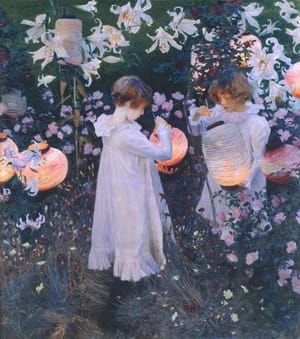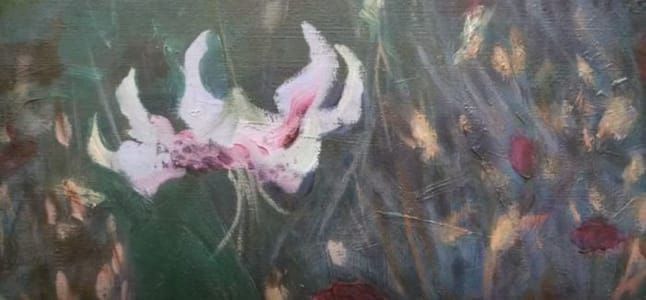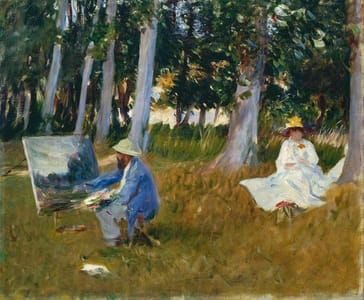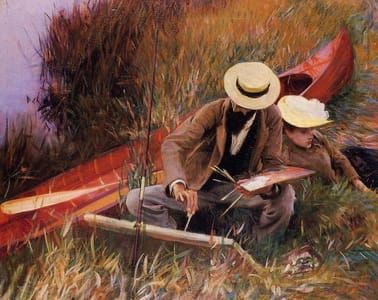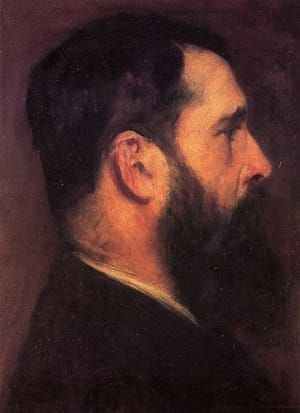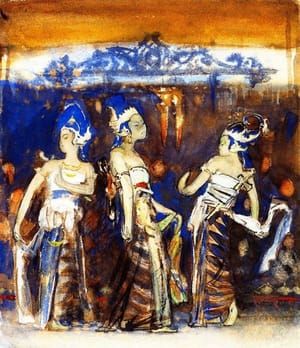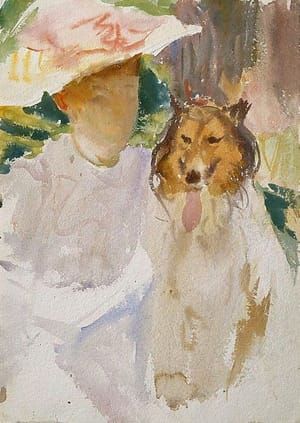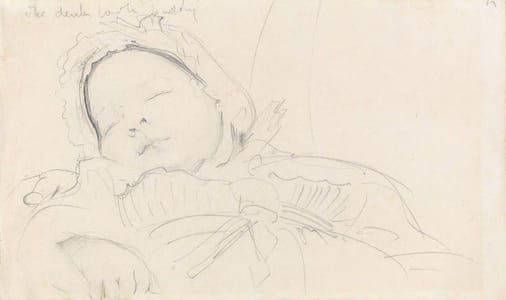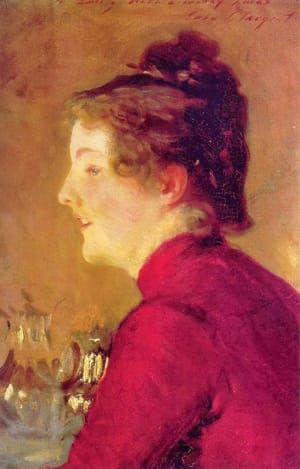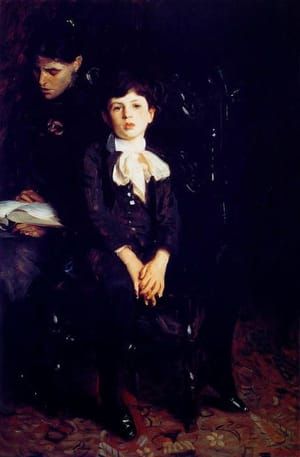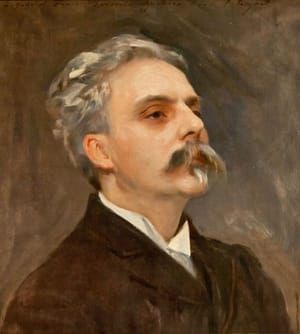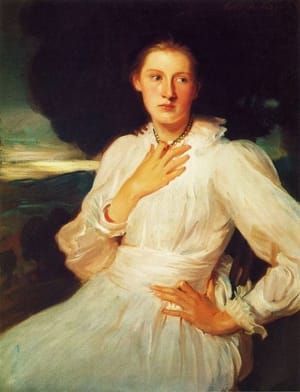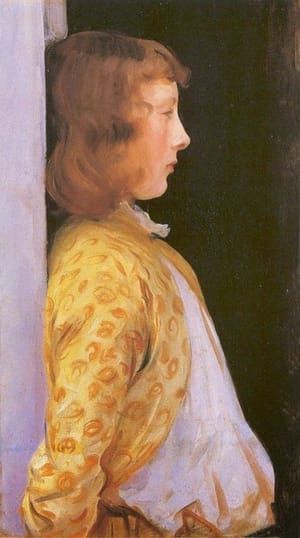
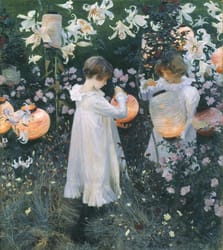
Carnation, Lily, Lily, Rose, 1885-1886
John Singer Sargent
Carnation, Lily, Lily, Rose, painted in the late summer of 1885 and 1886, was named for a popular song; its style “is poised”, the exhibition catalogue notes, “between several aesthetics: French impressionism, English pre-Raphaelitism and aestheticism”. Sargent’s chief aim in this portrait, all who watched him create it agreed, was to capture en plein air the transient quality of “fugitive evening light”. It took him two years to achieve, for he could only paint for 25 minutes each night in late summer: every evening at 6:45 Sargent “would drop his tennis racquet”, remembered a friend, and “lug out the big canvas” from his 70 ft-long studio into the garden, where he would paint for as long as “the effect lasted”. He had almost certainly been to Giverny by then, and had watched Monet paint out of doors. He came to share Monet’s preoccupation with the play of natural light, but he never fully...
(https://www.theguardian.com/artanddesign/2015/jan/30/how-john-singer-sargent-made-a-scene)
Uploaded on Oct 23, 2017 by Suzan Hamer
John Singer Sargent
artistArthur
Wait what?
